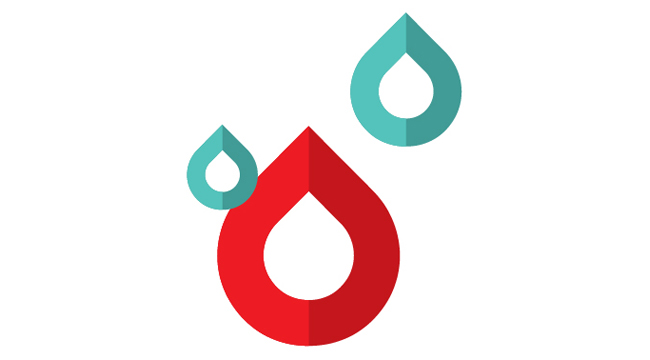Canadian Blood Services' laboratory awarded Thalassemia Foundation of Canada research grant

This blog was prepared by Canadian Blood Services programs and reporting coordinator Dr. Emily Freeman, with edits and reviews provided by additional members of the Knowledge Mobilization & Strategic Alliances and Stakeholder Engagement teams.
The Thalassemia Foundation of Canada is a patient organization with a mission to support research, treatment, public awareness and patient support to improve the lives of individuals living with thalassemia. The Thalassemia Foundation of Canada is a long-standing member of Canadian Blood Services stakeholder community. Recently, their medical advisory board selected Canadian Blood Services’ research scientist Dr. Harinad (Hari) Maganti, as the latest recipient of funding through their research grant competition. This research grant is made possible through grassroots fundraising initiatives which include an annual walk/run event, golf tournament, Valentine’s Day gala and more.
On July 22nd, 2025, Board members and guests from the Thalassemia Foundation of Canada visited Canadian Blood Services to present the grant to Dr. Maganti and his research team. This grant will support Dr. Maganti’s laboratory’s work to develop novel lipid nanoparticle technology that could enable gene editing as a potential curative therapy for patients with thalassemia.

Advancing treatment options for thalassemia
Thalassemia is a genetic blood disorder caused by a DNA mutation (a typo in one’s genetic code). This mutation affects the body's ability to produce hemoglobin, a protein required for proper red blood cell function. Reduced hemoglobin levels result in anemia, fatigue, bone abnormalities and in severe cases can result in organ failure.
Current treatments for thalassemia include a combination of regular blood transfusions and medications to manage symptoms and reduce the risk of complications. Josephine Sirna, President of the Thalassemia Foundation of Canada, emphasized while presenting the research grant that patients place a high level of trust in Canada’s blood supply. No curative therapy is currently available, though in recent years, the use of gene therapy has gained a lot of attention as an alternative therapeutic treatment for genetic disorders such as thalassemia. Research undertaken in Dr. Maganti’s laboratory aims to develop alternative therapeutics that would reduce the number of transfusions thalassemia patients must undergo.
A promising new approach in gene therapy
Gene editing technologies work by editing or replacing defined sections of DNA, essentially allowing researchers to correct the typo in these patients’ genetic code. However, before gene therapy can be applied to thalassemia there are a few barriers to overcome. One of these barriers is delivering the gene editing tools to the cells that need them. In the case of thalassemia, that would be blood stem cells which are located deep within our bone marrow.
Work by Justine Hanotaux, a PhD candidate in the Maganti laboratory and recipient of Canadian Blood Services’ Graduate Fellowship Program award, has been crucial to advancing this research. Her work focuses on overcoming this delivery barrier using lipid nanoparticles (microscopic fat bubbles) that can be used to deliver gene therapy tools in vivo – a term meaning inside the body. Once in the bone marrow, the lipid nanoparticles can target the specific blood stem cells and correct the DNA typo, a potential long-lasting treatment.
Excitingly, the manufacturing of lipid nanoparticles comes at a greatly reduced cost in comparison to other gene therapy tools. According to the Canadian Institute of Health Research, gene therapies can cost anywhere from $300,000 – $2 million per patient, making cost one of the largest barriers to accessing gene therapy. Therefore, the significant reduction in production costs this in vivo solution offers could make this therapy more accessible to a greater number of patients.
This research is currently in pre-clinical stages, providing a sneak peek at the future of gene therapy. Of course, this work could not be advanced without the ongoing support from research grants such as that provided by the Thalassemia Foundation of Canada. We would like to extend our gratitude to the Thalassemia Foundation of Canada, as well as their members and donors for their continued support of Canadian Blood Services.
-
To view Dr. Maganti’s Meet the Researcher video where more details about his laboratory’s research are described, visit blood.ca.
Canadian Blood Services – Driving world-class innovation
Through discovery, development and applied research, Canadian Blood Services drives world-class innovation in blood transfusion, cellular therapy and transplantation—bringing clarity and insight to an increasingly complex healthcare future. Our dedicated research team and extended network of partners engage in exploratory and applied research to create new knowledge, inform and enhance best practices, contribute to the development of new services and technologies, and build capacity through training and collaboration. Find out more about our research impact.
The opinions reflected in this post are those of the author and do not necessarily reflect the opinions of Canadian Blood Services nor do they reflect the views of Health Canada or any other funding agency.